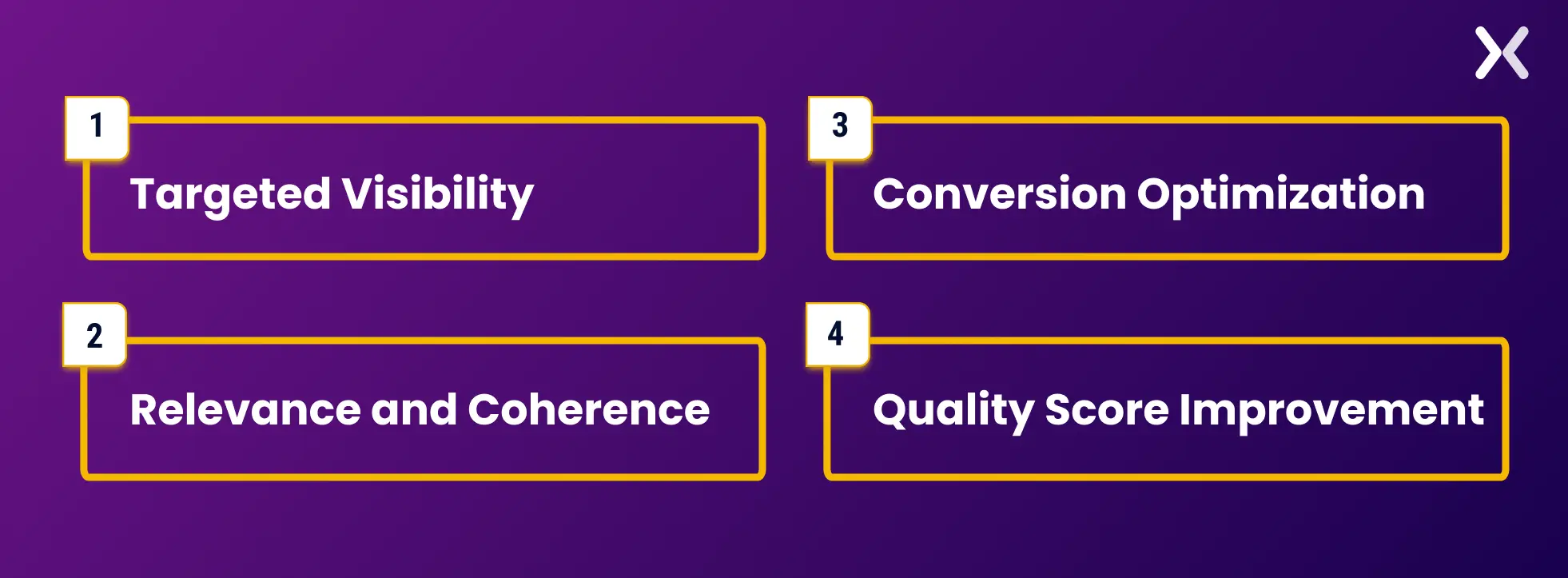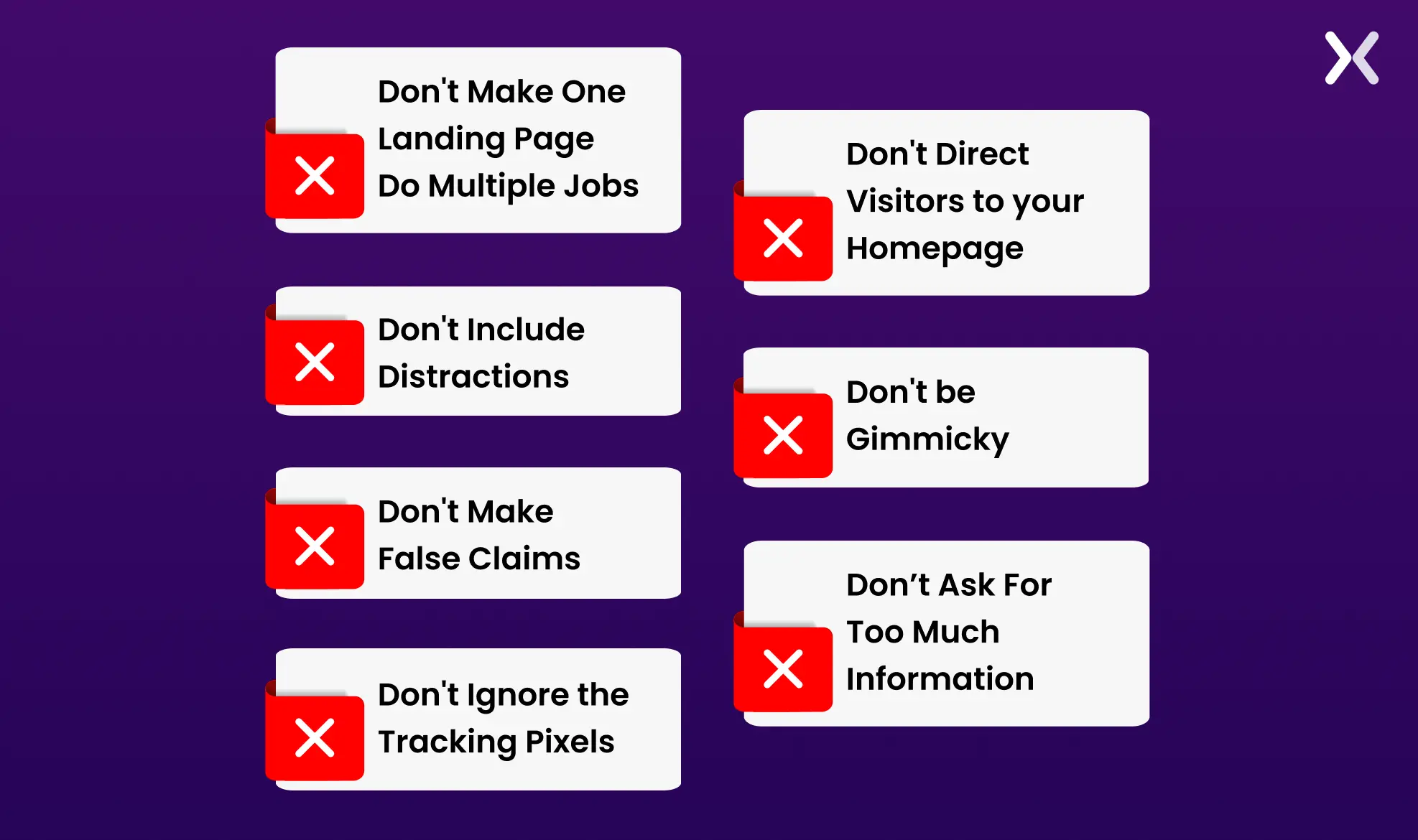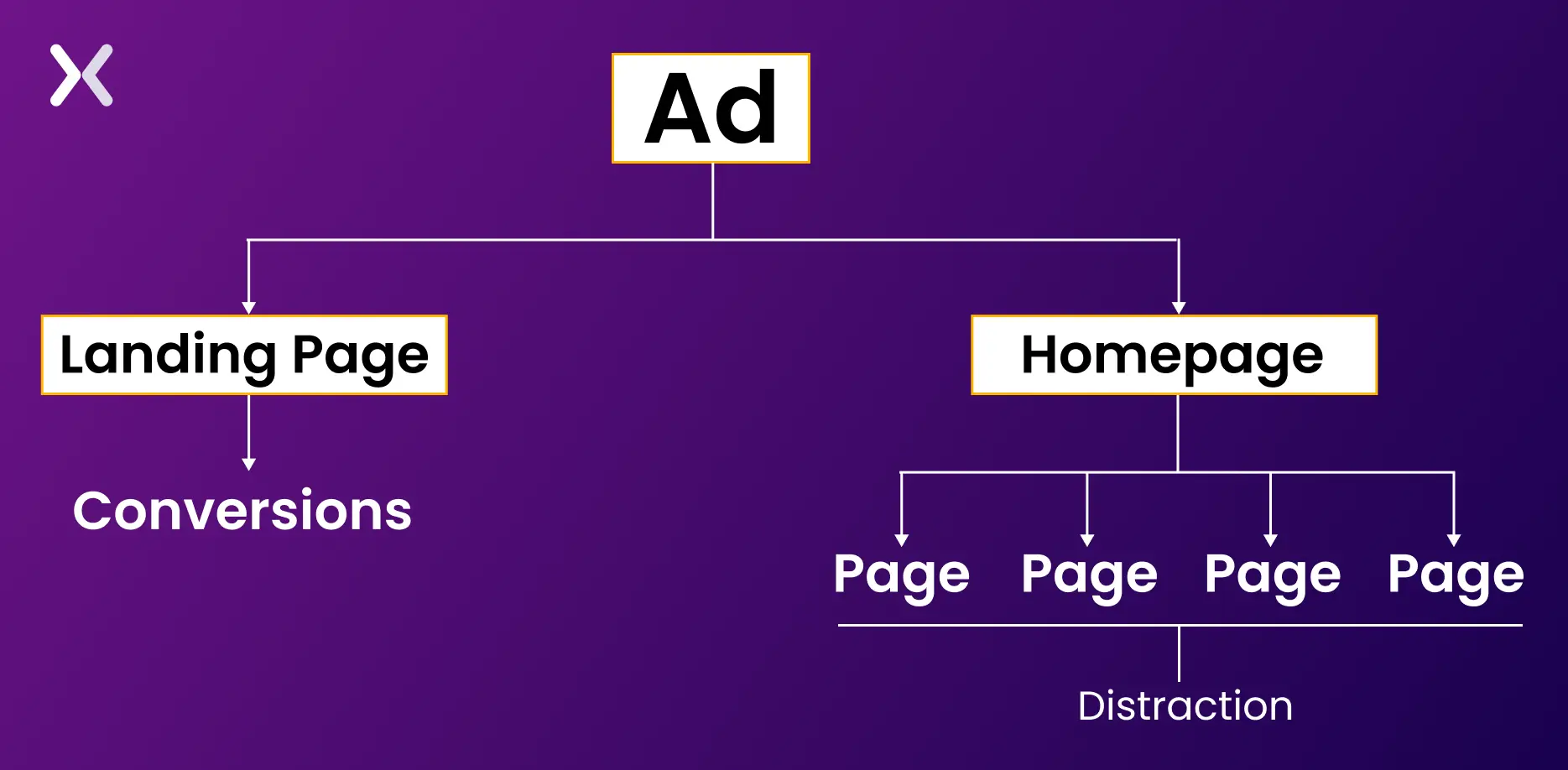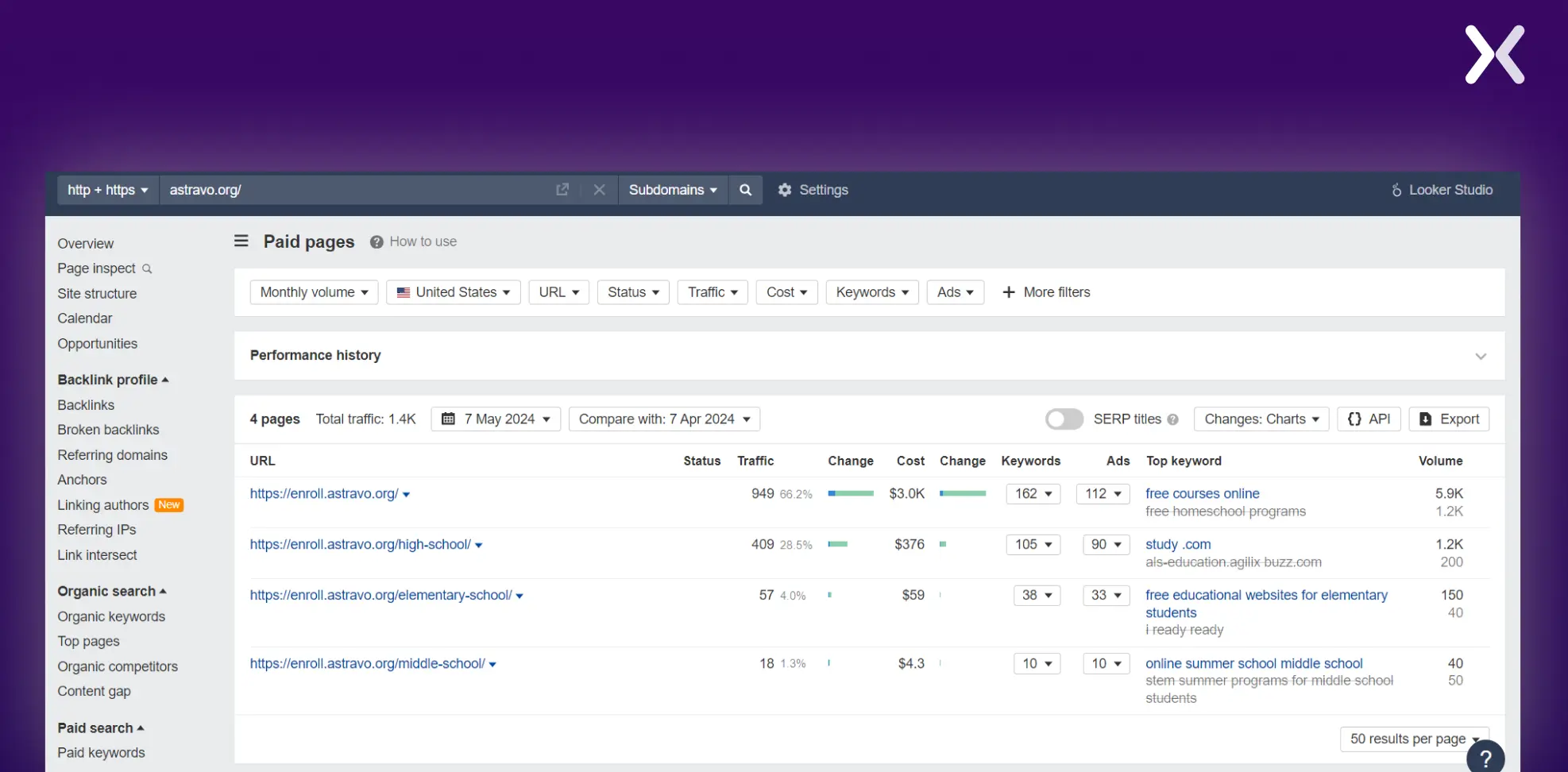Targeted paid search landing pages drive the most conversions, but many still struggle with them. Whether we talk about Bing or Google paid search, the benefits of using relevant ads and landing pages are many.
Meanwhile, marketing teams pour all their resources into keyword analysis and bidding strategy, ignoring their landing pages. Even if dedicated landing pages are created, PPC landing page best practices are missing.
You can drive traffic to a landing page all day, but if it’s not insightful and user-friendly, you’re kneecapping yourself before you even start.
We’ve compiled some best practices and dos and don’ts to help you create paid search landing pages that convert.
But first, let’s review the basics!

Paid search landing pages are created for specific advertising campaigns and are optimized for a targeted set of keywords or phrases. In contrast, organic landing pages are created as part of a website’s content. They are optimized for a broader range of keywords to improve the website’s overall search engine ranking and visibility.

In short, paid search landing pages and organic landing pages differ in how they are generated and optimized for search engines.

Learning about the difference between organic and paid traffic can help one understand the importance of landing pages in PPC campaigns.

Targeted Visibility: Landing pages for Google Ads allow marketers to choose the specific web pages they want to appear at the top of search results for a particular query, disrupting the organic search cycle.
Relevance and Coherence: While a homepage caters to various audiences, it may not deliver the specific information a user expects after clicking on an ad, leading to high bounce rates and cost-per-click. Paid search landing pages, with a good initial investment ensure coherence and relevance by delivering focused information aligned with the ad’s message.
Conversion Optimization: Paid search landing pages are easy to track and optimize compared to website pages.
Quality Score Improvement: Google Ads prioritize relevancy between ads and landing pages. A well-optimized landing page built with some good initial investment can positively impact the quality score, leading to lower costs per click for PPC campaigns.
But what makes a high-converting PPC landing page? Let’s discuss.
Generating leads with paid search landing pages becomes much easier once you know what you’re doing. Many elements factor into successful landing page design, such as psychological factors, social proof, discounts, etc. So, if you’re designing a paid search landing page, we have a few dos and don’ts to help you improve your conversion rates.

Your landing page should not fulfill multiple purposes. Different types of post-click pages have different goals. In B2C, this might mean purchasing your product or signing up for your service. In B2B, this might mean signing up for a webinar, downloading a product sheet, or sending an email address for more information.
You don’t want to ask a prospect to convert, then look at the new service offering, read a blog post, and learn how to get in touch with you, all on the same page, as it might confuse them.
To do this well, you might need to create many landing pages, each with its own distinct intent and goal. Although that might sound frightening, it might also be worth your time.
And having five or ten landing pages is exponentially better than just one or two.

For example, brands like Unbounce also utilize more than 10 PPC landing pages for paid search.
You want to make sure that your conversion route is free of distractions, such as links and buttons contained in navigation bars, footers, sidebars, etc.
When you have links or buttons to other pages on your web (or, worse, external sites!), you encourage the prospect to deviate from your carefully arranged conversion course and go elsewhere—and probably not come back!
If you are not convinced, here is a way to approach this.
Let’s get back to the Unbounce example. The landing page builder tool has over 18 paid search landing pages, of which 14 are active. After checking all 18, we discovered that over 8 had a navigation bar at the top that led to their website pages, while 10 had no external links.

Does that sound confusing? Well, when we examine the top keywords for these PPC landing pages more closely, we discover that most of the pages without external links target middle and bottom-of-funnel keywords, which means these landing pages aim to capture prospects who have a high intention to buy.
While the pages that have navigation bars are the ones that target top-of-the-funnel keywords.
One solution can be this, the other being A/B testing your navigation bar to see what gets you more conversions.
Do not make false claims about your product or service or cross moral lines. If you make false statements, it affects the reputation of your business. Also, Google does not accept statements that are meaningless or of no use whatsoever.

Do not use pictures or statements that are forbidden. Instead, keep your statements accurate as far as the paid search landing page is concerned.
Not tracking the performance of your Google ad landing page is a mistake you should never make.
You can start with more straightforward tracking practices, like URL tracking, with the help of UTMs and tools like Google Analytics. To take it up a notch, you can utilize the pixel-tracking method. Here is how it works:
Pixel Placement: A tracking pixel, also known as a web beacon or pixel tag, is a small, transparent image or snippet of code placed on a landing page. It is usually invisible to the user.
Tracking Events: When users visit the landing page containing the tracking pixel, their actions can trigger the pixel to send information back to a server.
Data Collection: The pixel collects data about ad impressions, clicks, and conversions for online advertising campaigns.
Reporting: The collected data is then used for analytics and reporting purposes, providing insights into user engagement, campaign effectiveness, and other metrics.
Tracking pixels for PPC landing pages provides accurate conversion tracking, attribution insights, and audience remarketing capabilities. With real-time data and cross-device tracking, they enable quick adjustments and a holistic view of the customer journey, helping optimize paid search campaigns for higher ROI.
After your online prospects click on your ad, don’t just take them to your home page. They clicked on your ad because it made them curious or because they found an answer to their needs. However, by bringing them to your homepage, they may lose interest as soon as they have not been deposited directly to a page about your product or service provided in the ad.

They’ll most likely close the tab right away. Those who spend time looking around are less likely to convert because they are already too distracted by all the options on your website.
Consumers today are very discerning, particularly as they can access almost any content they need on the web. So, if your paid search landing page looks “scammy” or gimmicky, it can be a huge turn-off.
Creating effective landing pages is actually relatively straightforward. State the facts, including testimonials, and use logos of your company’s accreditations. Make sure everything is verifiable. Doing so can go a long way toward helping reassure your prospects that your business is legitimate.
For example, Astravo runs four paid search ads with four different PPC landing pages.

Each page has dedicated content to different services the organization offers for targeted marketing.

With today’s reality of identity theft, don’t ask for too much personal information if it isn’t completely necessary. For example, if you’re offering a free download of your ebook or a newsletter, don’t ask for their pin codes - you will scare people away.

Still, if you have a long form, you can utilize multi-step forms to ask questions in a step-by-step manner and make it easier for the visitors to fill out the form.

Your paid search landing page’s headline, call to action, and offer should match your ad copy. If all three aspects aren’t in line, the landing page conversion rate will suffer. Therefore, follow the same rules as the ad copy, concentrate on the customer, and discuss the benefits.
For example, on a Google query for “omni channel solutions,” the paid search shows WebEngage’s PPC ad. On inspection, the ad copy and linked landing page complement each other perfectly.

Key features of omni-channel solutions are highlighted throughout the landing page, with a subtle reference in the ad copy under “personalized messages across 12+ channels.”
When designing your paid search landing page, each element must work together. For instance, if you’re selling a product, your landing page should provide product images and relevant information while maintaining a cohesive layout.

Keep your layout simple and clean, and only use images and copies that are relevant to your end goal.
A product or service “in motion” can have a significant effect on landing page conversions. Videos offer one of the easiest ways to do this. Nothing is better than a video illustrating or showing off a hard-to-describe product or service.
But just because you have a video or two doesn’t mean you need to add it to your landing page immediately. Just like with still images, you need to make sure any videos you add are relevant and provide value to visitors.
For example, Unbounce allows you to interact with the builder on their PPC SaaS landing page, which takes the page’s user experience to the next level.

Trust signals can go a long way toward convincing visitors that you’re worth working with. Anything from written or video testimonials to trust seals and accreditation can do the trick, and you don’t even need that many.
One or two really good trust signals can make all the difference, especially if your brand is less well-known. By keeping a clear privacy policy, you can ensure your visitors feel secure while sharing information, increasing their trust in your brand.
If you don’t have video testimonials, you can keep it simple like Membermeister does. Their Capterra rating is featured in the sticky navbar at the top of the page, and right after the CTA, they ensure that their prospects feel safe while sharing information with the line “Your Information is 100% Secure.”

One thing to notice on this landing page is how the social proof is placed impactfully in various sections, which is also crucial when it comes to adding social proof on your landing page. While not every landing page can start with extensive testimonials or videos, they always start with ratings and logos of brands you have worked with, etc.
At the end, we have a dedicated testimonial section, which is another push to win visitors’ trust.
Don’t forget to express your thanks! Not only is it the polite thing to do, but it’s also something you can use to your benefit. So, go beyond a quick pop-up. Instead, build a new thank you page that provides more value. Insert any of the links and tools that you wanted to use but couldn’t.
Just because you’ve already achieved what you wanted (a conversion) doesn’t mean you have to end the conversation.

With 96.5% of people accessing the internet using mobile devices, you surely don’t want to take your chances with a bad landing page experience on mobile.
Optimizing landing pages for mobile devices requires careful consideration and attention to detail to ensure a seamless and engaging user experience. Responsive designs, thumb-friendly navigation, cross-browser, and cross-device functionality are some of the top elements for creating a mobile-friendly landing page.
Whether or not your PPC landing page converts is a science - understanding the psychology of your users and sparking their emotions in a way that convinces them to convert.
Relevance is paramount. The more relevant the information you provide, the higher your chances of conversion. Many things can affect the conversion rate of your landing page: authority, discounts, scarcity, and social proof.

To make your PPC landing pages even better, best practices are not enough. You need to ask several questions before you start investing in your paid search pages.

“The most critical piece when developing a PPC landing page is relevance. For Review Flowz, we tailor our landing pages to match the specific needs of our diverse client base. Ensuring that the landing page content is directly relevant to the ad that brought the user there significantly improves conversion rates.”
Paid search plays a very particular role in the customer journey - providing content for users to scope out their options. Getting people to click on your ad is just a tiny part of the whole marketing process.
The next thing they face is your landing page—a page you can build for your promotional campaign. The success of this page will determine whether or not you accomplish your market objective.
Quality landing page design does not require titanic efforts, but some research is required. The methods you need to use will depend on your target demographic and the targets you set.
All high-converting landing pages have some standard features. You should be able to answer some questions in this article to make sure you are aware of the main aspects of a quality landing page.
A conversion can be whatever you need it to be - a download, a form submission, a video play, or a visit to the your app. However, your goal needs to be explicit so that it can be measured.
It’s also essential to align your conversion goal with your ‘ask”. Too often, higher-ups want to promote demo requests on their paid search landing pages, which is the equivalent of proposing on the first date.
Be careful not to come on too strong. Smaller ‘asks’ are less intimidating. A simple ‘learn more’ will often perform much better.
Users often know what they want when it comes to e-commerce paid search. They’re looking for the best deal, free shipping, and coupon codes. Your ad copy and paid search landing page will do a lot of work to get them to buy.

For more significant B2B landing page transactions, you need to provide content that offers the customer something of value. These conversions are slower and require a variety of decision-makers to weigh in.
This is crucial specifically for B2B companies.
You’ve got to know who your ads are targeted at. Insight into your audience directs the message, landing page content, and targeting of your ad. Your PPC landing pages and ads will look very different if they target the CFO vs the CMO.
Echoing the above “request a demo” scenario, specific viewers may not have the authority within their organization to request a demo. These users could collect sources to present a list of eligible choices for management team decision-making. It’s important to remember this when designing your paid search landing pages.

Do you have a particular solution that you want to advertise through a paid search?
This could be a product, a category, or a service that addresses a particular industry pain point. For example, if you’re selling time-tracking software, your pay-per-click landing page should discuss its advantages and selling points.
It’s essential to break this down into digestible pieces of material. Discuss common pain points and how your product can relieve those pains. Discuss high-level benefits and use testimonials, icons, and graphics to make the page more appealing.
Your landing page will make or break paid search results. To calculate your quality score, PPC ads will reference your keywords, your ad, your landing page, and user behavior on your landing page.
If the landing page is off-topic compared to your paid ad, visitors will bounce, the CPC will increase, conversion rates will decrease, and the rating score will fall.

A PPC landing page should be part of your buyer’s journey and end in conversions. To achieve this, you must understand how your landing page funnel will work at various stages of the sales cycle.
It is crucial to set clear expectations for your PPC landing page from the start. This can be achieved by creating a clear set of landing page KPIs to track and related benchmarks to examine.
Without these, you might have a lot of data but not a concrete conclusion about what is right and wrong with your landing page.
Creating the perfect landing page for your PPC campaign is simple once you know what main elements you need to integrate into it.
Pay attention to the dos and don’ts, make sure to optimize your landing page for mobile, and pay attention to design. Your goal should be to turn a visitor into a potential customer. So, follow these simple steps if you want to create a successful and profitable paid search landing page.
Apexure has 100+ blog posts on landing pages to help you build the best version of your PPC landing page. Learn about creation, testing, analysis, optimization, and all about landing pages.
Making a PPC landing page that gets a high-quality score requires the help of an expert. Book a call and one of our landing page experts will contact you soon.
Check out our landing page portfolio to discover conversion-friendly landing page elements that might be missing from your PPC campaigns. Learn about the latest trends today.
A paid search landing page is a web page visitors ‘land on’ after clicking a pay-per-click ad.

Related Articles:
Drive More Sales or Leads With Conversion Focused Websites and Landing Pages
Get Started.png)
In today’s fast-paced digital world, having a responsive website is no longer just a nice-to-have, it’s essential. Whether...
As artificial intelligence continues to evolve, businesses are finding innovative ways to enhance their marketing efforts. One of...
Get quality posts covering insights into Conversion Rate Optimisation, Landing Pages and great design